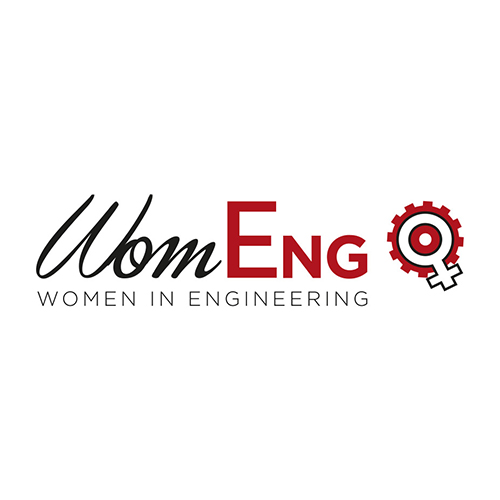NAADIYA MOOSAJEE, H’15
Leading the Revolution for Women in STEM
“Our vision is to see girls at every corner of the world, particularly Africa, putting up their hands saying they want to be engineers. WomEng is aiming to reach 1 million girls by 2027.”
Empowering Women in STEM
THE CHALLENGE. The achievements of young female students in mathematics and science were on par with male students in South Africa, and yet the number of women pursuing higher education in Science, Technology, Engineering and Mathematics (STEM) and entering into the STEM workforce was vastly underrepresented. According to UNESCO’s Institute of Statistics, only 8 percent of all students in engineering, manufacturing and construction globally are women. With STEM-related industries on the rise, South African engineer Naadiya Moosajee realized that women were being barred from opportunities for reasons that began as early as childhood. Moosajee decided to use her personal experience as a female engineer and the systemic challenges she faced both educationally and professionally as tools for changing the status quo.
THE PROCESS. In order to create gender diversity in the South African STEM industries, Naadiya Moosajee knew she would have to “revolutionize the face of engineering” and that she would need to create and foster a community that would help enact this change. In 2006, she teamed up with Hema Vallabh and co-founded WomEng, garnering the support of groups such as Unilever, Ernst & Young and UNESCO, among others. Taking a grassroots approach, WomEng developed cost-effective programs to address the issues facing women in the engineering sector from school level all the way through to industry. Moosajee saw girls who were hungry for opportunities to work in STEM and changed the status quo by putting the power into their hands.
THE RESULT. Empowering girls in South Africa had exponential results. Keeping right in line with the very nature of STEM, the seed that WomEng planted in South Africa created energy that grew until WomEng programs branched around the globe, reaching girls and women on every continent. The WomEng model has a high success rate and 12 year track record of enabling girls to enter STEM education and industries. In South Africa, we’ve seen shifts in the number of students applying to study engineering. WomEng classes have gone from 10% to 30-40% [female], depending on the engineering field. With backing from UNESCO, Moosajee and the team at WomEng plan to take things to an even greater level — reaching 1 million girls with WomEng programs by 2027.


LEARN MORE ABOUT WOMENG
Develop a more gender diverse engineering workforce through education and technology.
WomEng attracts, develops and retains the pipeline of women engineering leaders globally through a series of robust programming and interventions at every stage of the pipeline.
WomEng is committing to reach 1 million girls globally through STEM education and awareness initiatives by 2027.
Empowering Women in STEM
ABOUT NAADIYA MOOSAJEE
A South African Engineer Empowering Women in STEM
In addition to her work with WomEng, Harambean Naadiya Moosajee is on the World Economic Forum Global Future Council on Gender Education & the Future of Work which directs policy discussion for leading WEF events.
Her vision for WomEng was for the organization to connect female engineering students on campuses, allowing them to build support networks and grow into confident leaders ready to face the often harsh realities of the workplace. The flagship program brings together the best and brightest female engineering students in the WomEng Fellowship to collectively tackle global challenges and to develop and prepare for industry.
“Engineers design our world and our society, and if we don’t have women at the design table, we exclude 50% of the population.”
At the heart of WomEng you will find The Hub, allowing women engineers and engineering students from around the world to connect, share resources and experiences, and collaborate. @Network is the latest evolution of WomEng programs, and was designed as networking events for both male and female engineers to engage in pertinent topics affecting the engineering industry.
I AM A HARAMBEAN
As a South African engineer, Moosajee believes that the Alliance is a great place to call home:
“I was looking for a home for African entrepreneurs and I am really fortunate to have found it. Harambe is perfect for an African entrepreneur who has a global outlook on life.
Through our Declaration we can get together and stand for something. It represents a vision that we have for each other and for our continent, and a brotherhood and sisterhood that makes it really special and unique.
Being a Harambean means being an entrepreneur that has a heart, passion and drive and a commitment to create change in Africa, and I hope to embody that every single day.”